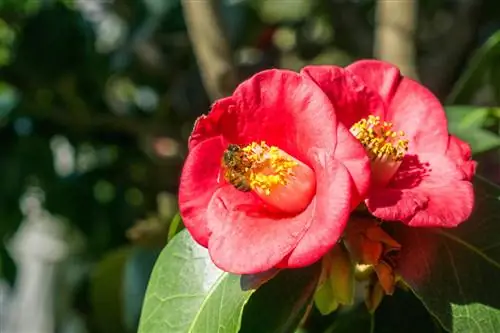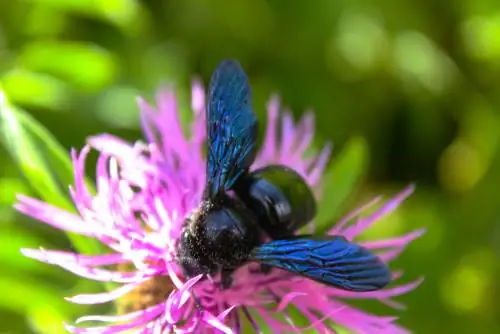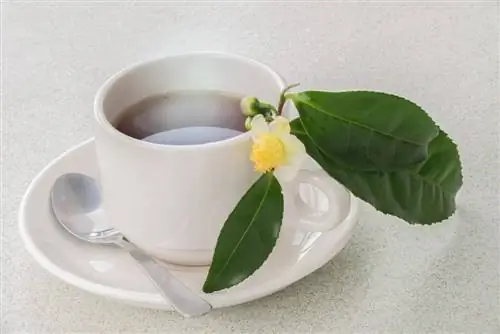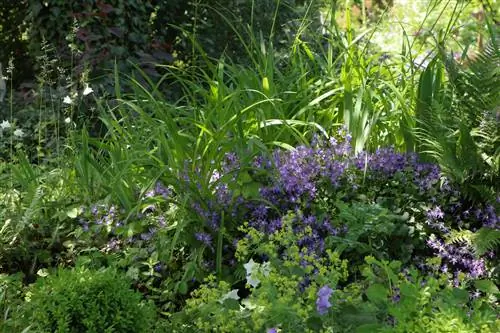- Author admin [email protected].
- Public 2024-01-02 03:03.
- Last modified 2025-01-23 11:22.
What sounds unusual at first, works: Although camellias bloom in the cold season and are a great eye-catcher in the winter garden with their splendid colors, they attract bees. We'll show you what it's all about.
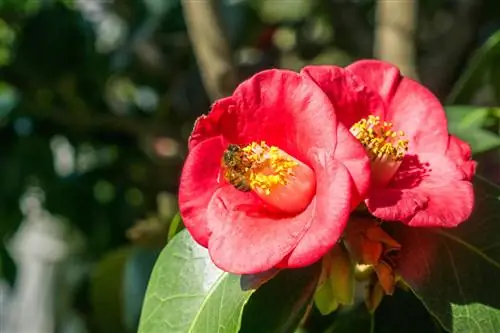
Is camellia bee-friendly?
The hardy camellia is one of thebee-friendly plants
On warmer days in winter, the fresh flowers are attractive to honey bees on their so-called cleaning flight. Autumn-flowering camellias are also avaluable food source for insects.
How do camellias attract bees?
The bees are attracted by thescent of the Camellia japonica, which is available in many colors. The beautiful flowers that emerge from flower buds are simply irresistible to insects.
Are all varieties of camellia bee-friendly?
Not every variety of camelliais bee-friendly. The bees likeonly the unfilled varietiesof the popular ornamental plant, which can be cultivated in a pot or planted out in the garden. Semi-double or double camellias are spurned by insects. If you want to make your garden bee-friendly with camellias, the following varieties come into consideration:
- “Cleopatra”: unfilled and autumn-flowering (Camellia sasanqua) from October to December
- “Navajo”: unfilled and autumn-flowering
- “Miyakodori”: unfilled with a flowering period from February to May
How do bees get the nectar from camellias?
Getting the food they want is not that easy for the bees. You have to get through the pollen carriers into the depths of the flower. In order to “harvest”, the beeshave two options:
- If ripe pollen capsules have burst open on their own, you can simply brush along them with your belly.
- If the capsules with the pollen are still closed, the bees have to open them with their front legs and accept the pollen dust released.
Are withered flowers also a food source for bees?
Even if the flowers of the camellia have withered after their blooming period,they are still available for bees to search for foodnectar is still availableWithered flowers can therefore remain on the plant for a while, as they are one of the few food sources available to bees in winter.
Where can camellias be planted to attract insects?
The evergreen camellia, which comes from East Asia, is equally suitable as a bee-friendly plant forbalcony, terrace and garden. It can be in a pot or planted out as a solitary shrub. The camellia prefers a location inpart shadethat isadequately sheltered from the wind. In summer the camellia can also tolerate a little more sun - provided that it is watered sufficiently.
In addition to bees, camellias also attract bumblebees and other insects and offer a valuable source of food from autumn onwards.
Tip
Do not use chemical fertilizers
Since the camellia provides a valuable habitat and food for honey bees, it is recommended to avoid chemical pesticides and fertilizers. It's better to use an organic fertilizer for rhododendrons and dose it sparingly due to the camellia's sensitivity to s alt.

